The Open Anthology of Earlier American Literature
My early experiments with engaging students as editors of course materials were inspired by Robin DeRosa’s Open Anthology of Earlier American Literature, which later became a REBUS project. You can see below how the early editions are delightfully filled with irreverent student annotations.
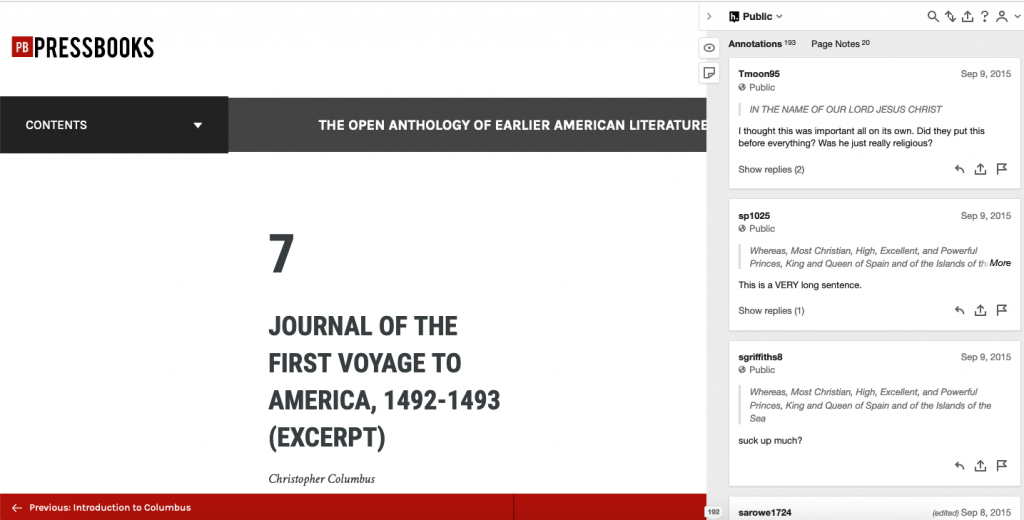
The goal with this project is that student annotations become a part of a new edition (this will actually be our measure of success…how many instructors and students work on transforming an early edition to incorporate contributions and suggestions from students). These annotations will become part of the edition, and the student and faculty contributors who created them will be credited. This will make it possible for annotations to speak across editions. Think the footnotes in Nicholson Baker’s novel Mezzanine, but including multiple voices.
The Book Traces project
I’ve also been inspired by the Book Traces project, which began at the University of Virginia in response to the same digitization of texts that is facilitating this project. I think it provides a useful way to think about the traces on physical books in relation to the annotations we’ll be creating for digital editions of a physical book. If you were going to check a book out of the library to read it for a course, you might find evidence of former students’ reading. That might be amusing or it might be irritating. In most cases, the former readers of that text didn’t have you in mind when they were marking up the text. This markup’s for you. And you’ll be invited to add to it. We want to make sure to retain the power of personal annotations, however. Students will be encouraged to annotate for themselves and to decide whether they want to share those early responses publicly, with a private course group, or keep them completely private.
Hypothesis
The very first Hypothesis education webinar, hosted by Jeremy Dean, brought Robin DeRosa, Elisa Beshar-Bondo, and Larry Hanley together for a conversation that I joined as a respondent. There was a really interesting debate that emerged during that conversation that I think usefully illustrates the relationship between open pedagogy and scholarly editing–a conversation I would like to enter with this project.
Stretching Existing Technology
Pressbooks (for HTML markup)
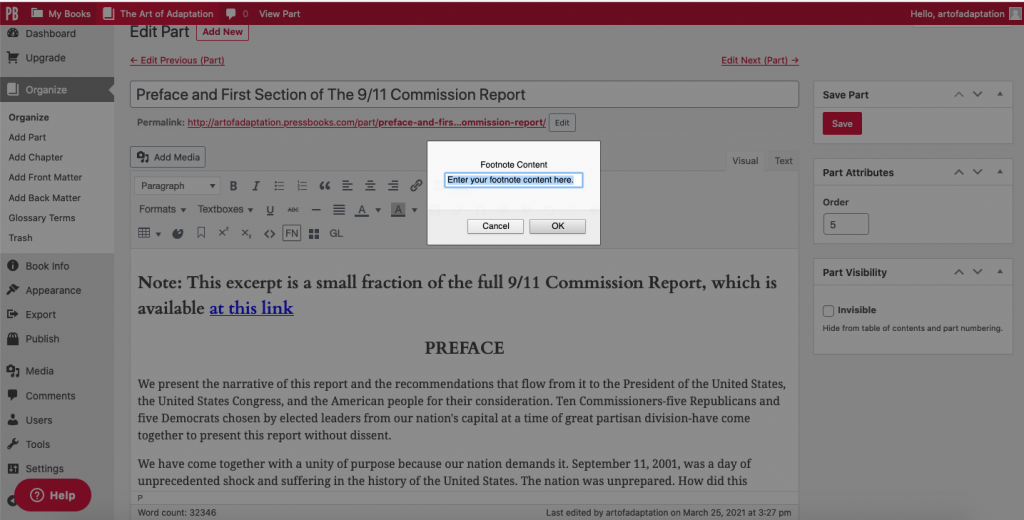
Pressbooks enables the addition of a footnote, with a small area to add the footnote. This could also be done with HTML as part of the learning process for participants, and the footnote could be styled in a particular way according to standards in the project, using HTML markup.
WordPress (for HTML markup)
There is nothing native in WordPress for adding footnotes[footnote]testing[/footnote], so deciding on a plugin will be useful. For someone creating an edition as a page in WordPress, this could be helpful (though maybe the plugin is not necessary if the html can be handled. Just tested this and that’s not the case. The CSS for the theme won’t recognize and transform the footnote tag, so that’s why a plugin is necessary…I think).
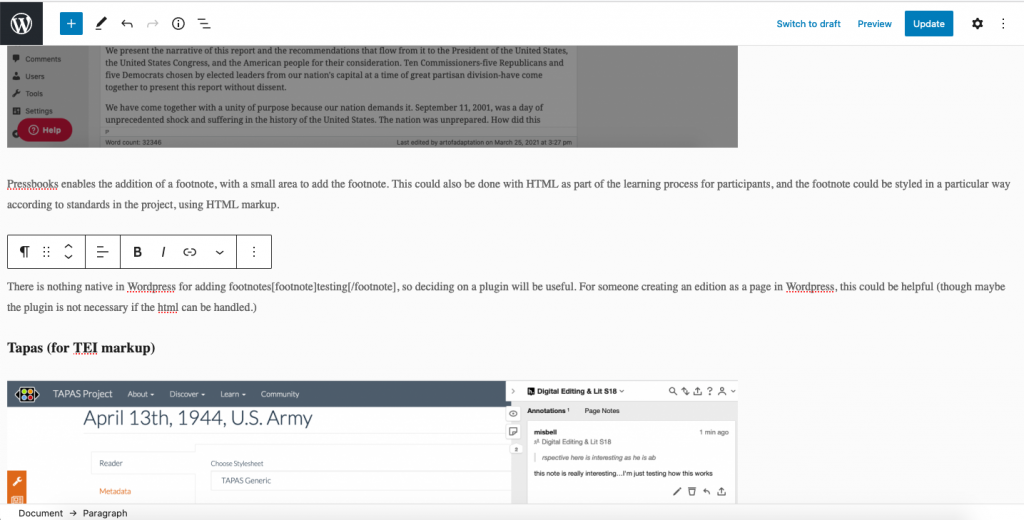
Tapas (for TEI markup)
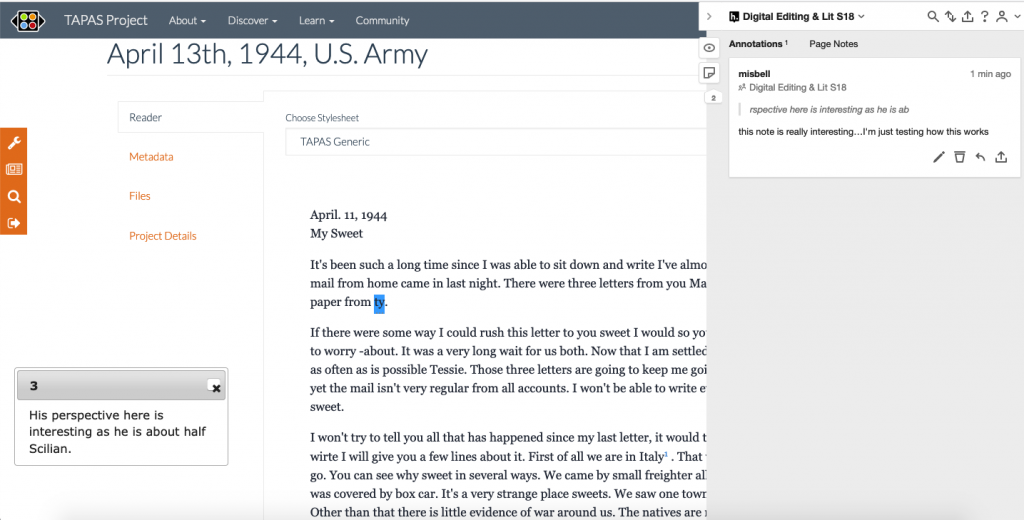
Tapas uses Java to display notes as in a pop-up window. This doesn’t interact well with Hypothesis. If a student were to annotate a note, the annotation would remain, but accessing it later would not prompt the pop-up to reveal itself. This (and other things) suggest that collecting notes on the page with the complete text (perhaps in a new way…perhaps at the bottom of each physical page) will be preferable for this style of reading. Would it be interesting for students to be able to see published footnotes as they read? Or does gathering them at the bottom make more sense? Could they toggle between two options?
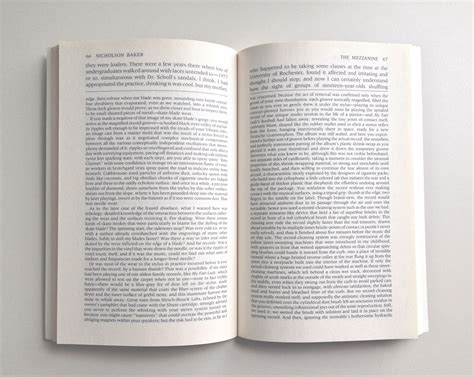
When thinking about the annotations, I’m thinking more and more that students might be able to choose to read the text without any notes OR the text with notes (at least my use of it might be that) and they could annotate either version because we’d be using hypothesis in the wild so I wouldn’t need to only load one version for them into Canvas. It really will be best to have the TAPAS toggle available for students to see what’s going on. The TAPAS toggle. I want to harness the power of the TAPAS toggle.